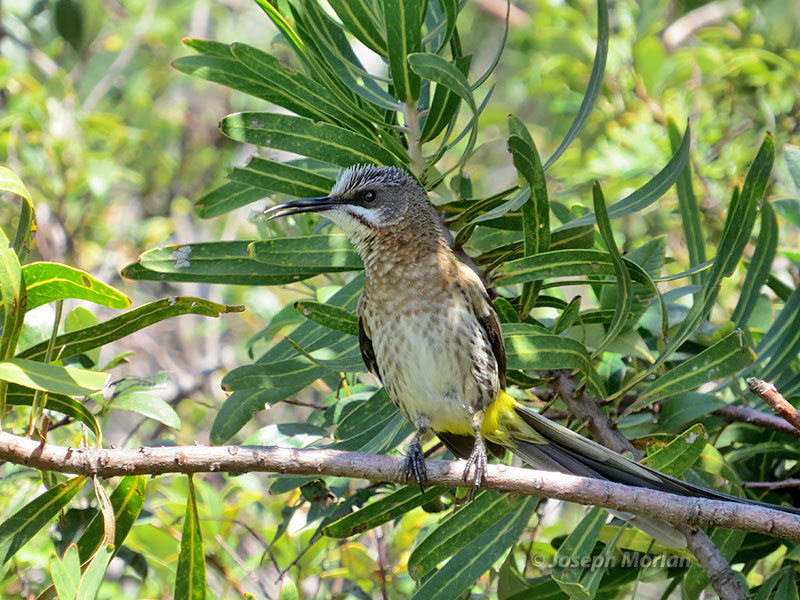
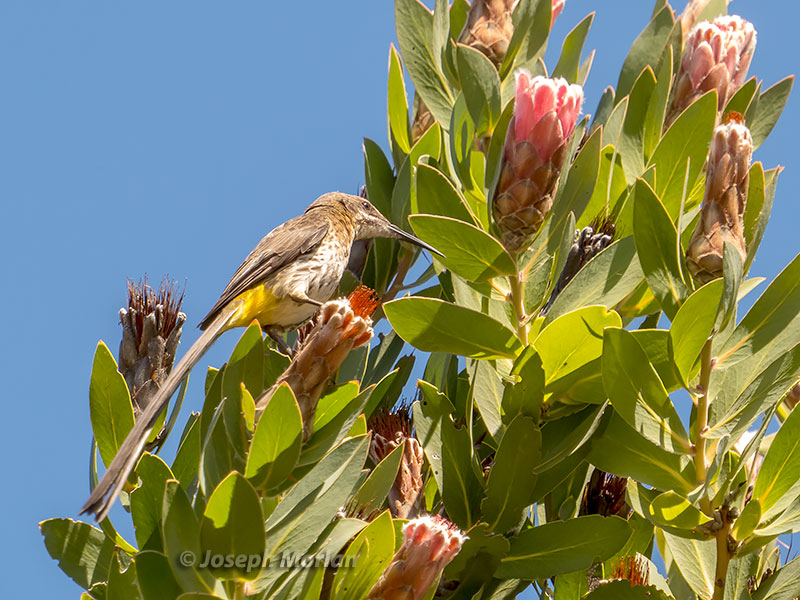
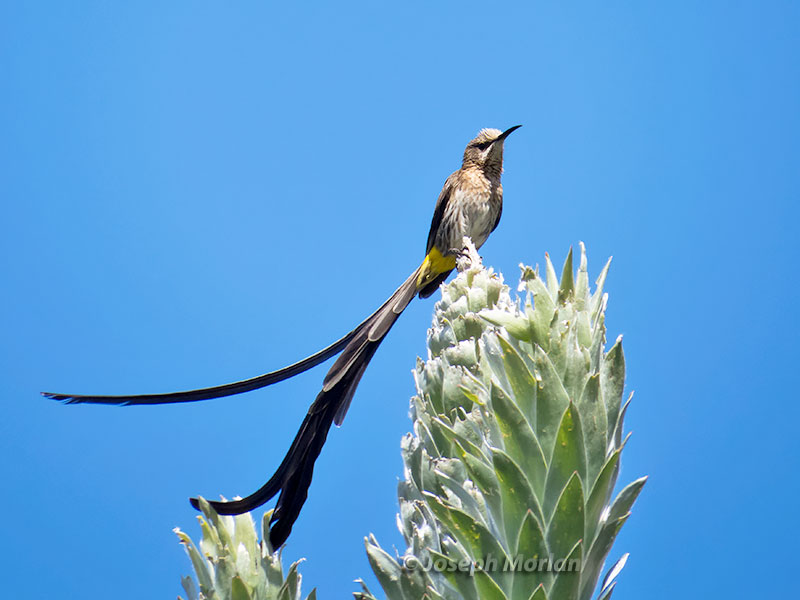
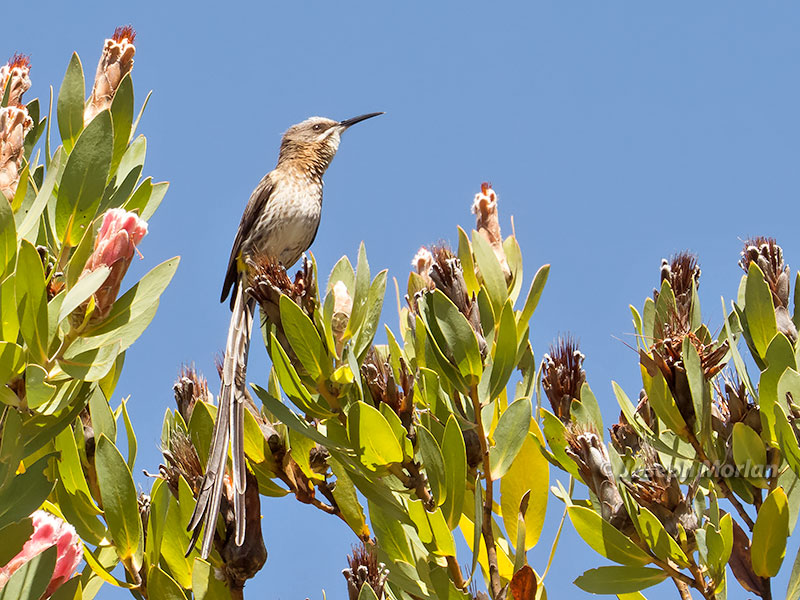
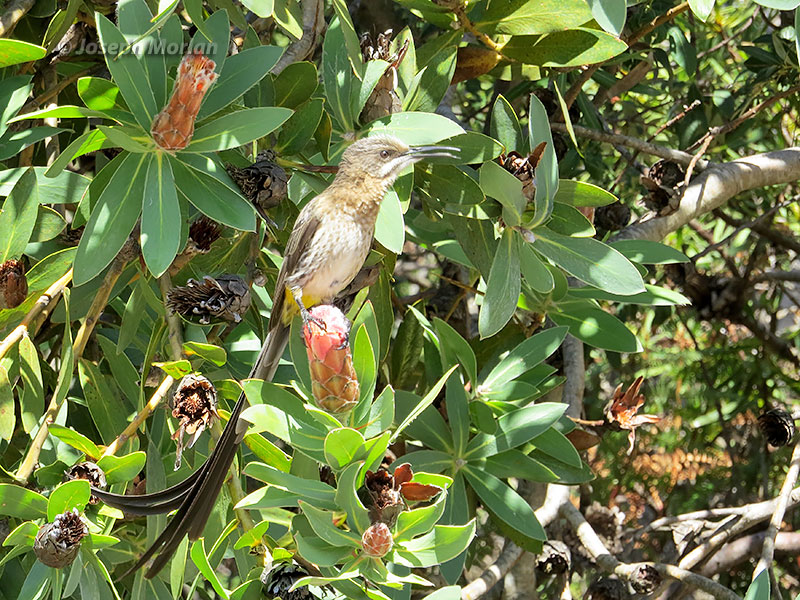
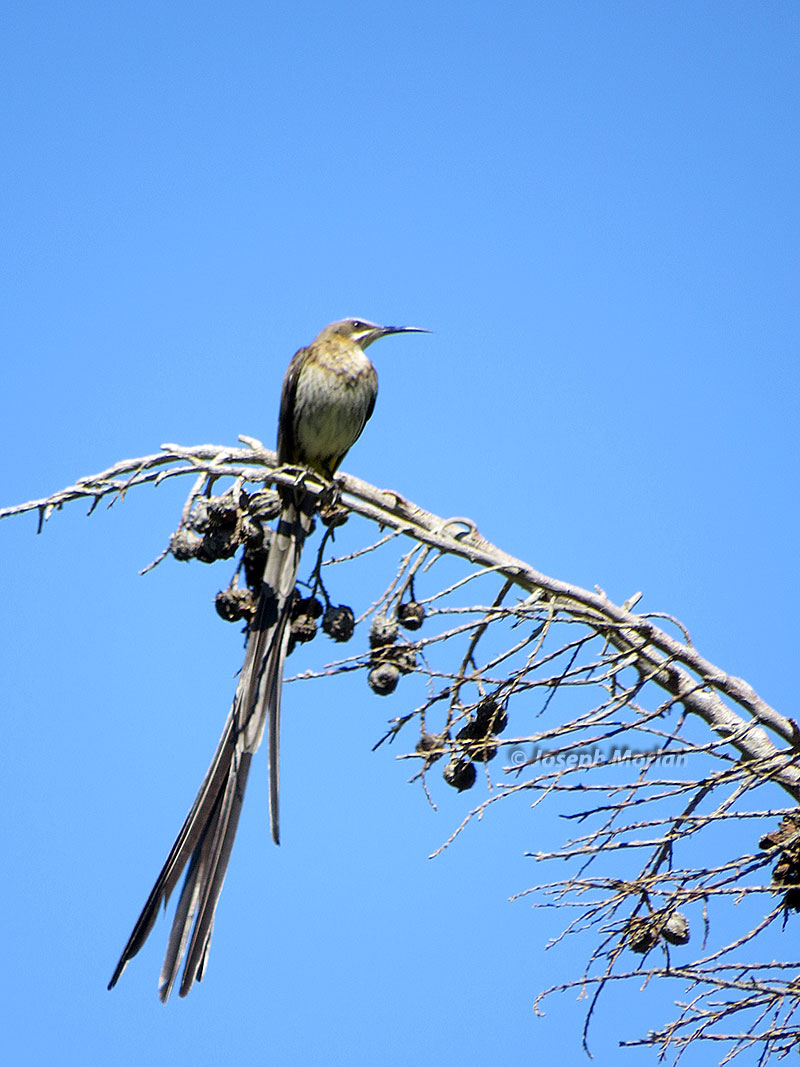
Sugarbirds are in their own family (Promeropidae) consisting of two species of Southern African nectar specialists in which the adults sport an extraordinary long tail which may be twice the length of the rest of the bird in males. Females and immatures have a shorter tail, about half that of males. Adult males have a brown chest while females and immatures have the center of the chest white. They show a strong preference for Fynbos habitat with many flowering Proteaceae particularly the King Protea (Protea cynaroides) which has the largest flowers in the genus. Coevolution has led to an interdependence with the Sugarbird being the primary pollinator for this flower. Sugarbirds also feed on the nectar of other Proteaceae such as Leucospermum and Mimetes for which they are also important pollinators. Canon PowerShot SX50 HS.
References:
de Swardt, D. (2018). Cape Sugarbird (Promerops cafer). In: del Hoyo, J., Elliott, A., Sargatal, J., Christie, D.A. & de Juana, E. (eds.). Handbook of the Birds of the World Alive. Lynx Edicions, Barcelona. (retrieved from https://www.hbw.com/node/60258 on 22 June 2018).
Sinclair, I.; Hockey, P.A.R., Arlott, N. (2005). The Larger Illustrated Guide to Birds of Southern Africa. Struik, Cape Town.